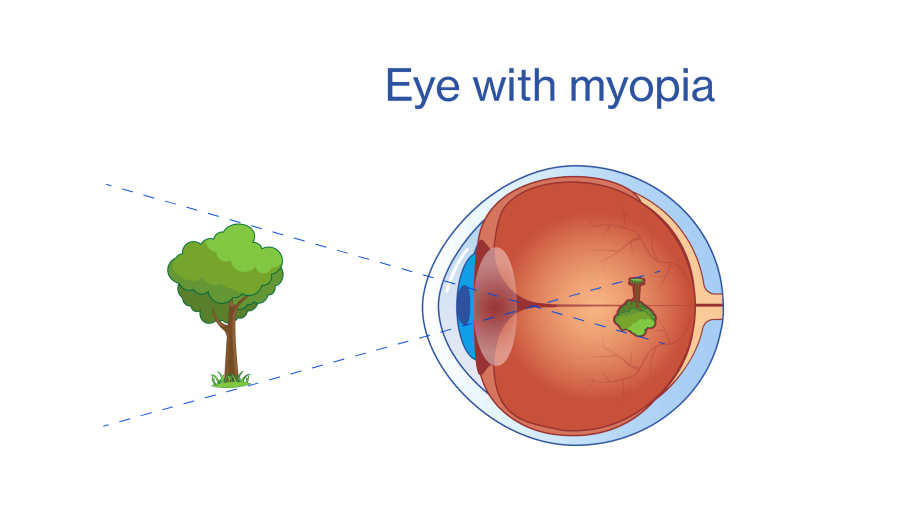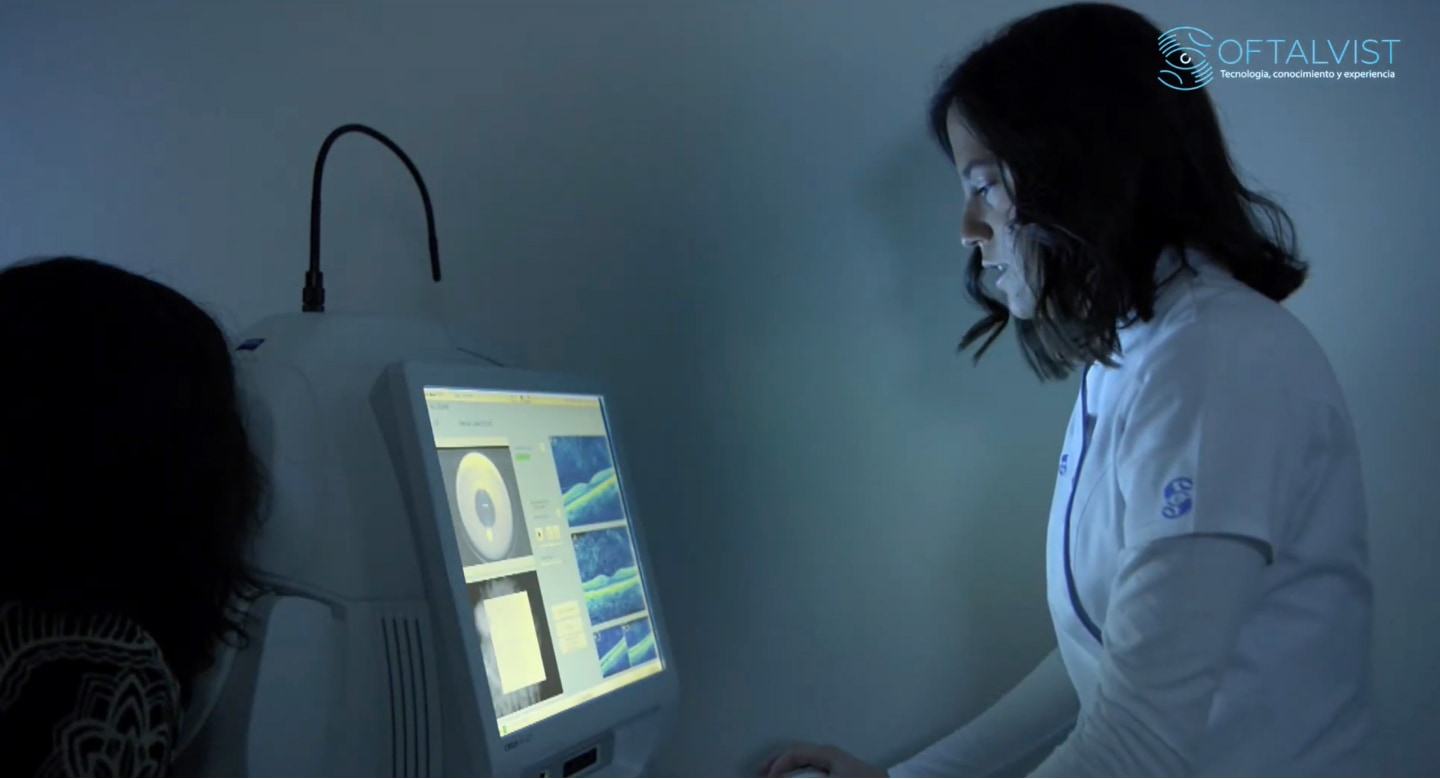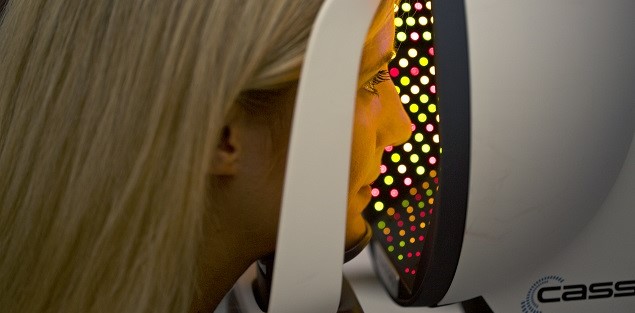Refractive surgery / Myopia
What is myopia?
Myopia is a refractive disorder that prevents sufferers from seeing objects in the distance clearly, and it also make it difficult for them to see objects close-up as images are focused in front of the retina.
Approximately 30% of the population in the West suffer from myopia, and this percentage increases significantly in Asian countries.

What are the causes of myopia and why is it on the increase?
Myopia can occur because the cornea is too curved or because the eyeball is too long. It usually stops increasing at the age of 21, although in some cases it may continue beyond this age. The primary causes are the following:
Genetics
Myopia may be hereditary, passing from parents to children, as it is a dominant gene.
Disease
Some illnesses trigger myopia, and these may be either temporary or permanent.
Environment
Depending on the patient’s environment, it may be caused by a specific factor. For example, common causes of myopia are environments with dim lighting or working with objects up close.
Symptoms of myopia
The main symptom of myopia is that the patient can see objects up close in total clarity, but objects in the distance appear blurry or unclear, such as road signs, for example.
Although it is more rare, patients may also experience, headaches or eye strain. These symptoms can be noticeable if patients often squint, as if they have to make more effort to see objects in the distance clearly.
It can be detected in children if you notice, for example, that they complain of not being able to see the blackboard or television properly, or if they have to look at a book very closely to read.
 Philip Barlow paintings: what life is like with myopia
Philip Barlow paintings: what life is like with myopiaTypes of myopia
THE MOST COMMON
Simple myopia
Simple myopia is the most common form and usually applies to patients with less than 6 dioptres. It can be corrected simply enough with glasses, contact lenses or surgery.
High myopia or pathological myopia
Pathological myopia applies to those with a prescription of more than 6 dioptres where it is associated to neurodegenerative changes in the retina and the macula. Myopic macular degeneration may also occur in young people, leading to serious problems with their central vision.
The degeneration of vitreous gel in patients with pathological myopia increases the likelihood that they will see floaters in their vision. For this reason alone it is important to regularly examine the periphery of the retina to identify any degenerative lesions that could predispose the patient to retinal detachment. If they see flashes of light in addition to floaters, the risk is much greater.
Furthermore, if dark spots appear in the central field of vision, of if objects appear distorted or crooked, there is a high chance that the patient has developed myopic macular degeneration. When treating this, using a laser on dangerous degenerative lesions on the periphery of the retina may prevent retinal detachment.
Treatment with intraocular injections may also prevent the development of scarring in the centre of the retina. The majority of myopic macular degeneration cases can be treated perfectly with just one injection, minimising the risk of blindness.
In both cases it is possible for the myopia to occur in combination with a certain level of Astigmatism (myopic astigmatism)
Myopia surgery
How is myopia corrected? Myopia can be corrected with glasses and/or contact lenses, and also through refractive surgery. The higher the patient’s dioptres, the thicker the lens used to correct their myopia will be. However, with myopia surgery we can reduce or even eliminate the need to wear glasses and/or contact lenses for the rest of their life. The first step is to perform a comprehensive pre-operative ophthalmology exam, where a series of tests will be carried out to assess the patient’s myopia.
Myopia tests
At Oftalvist we believe that the first consultation should not be merely informative, it should be a visit where the patient goes home knowing if their myopia can be corrected and which technique would be most suitable. That is why pre-operative tests performed today for correcting myopia are much more advanced, straightforward, painless and fast, allowing us to assess the condition of a patient’s eyes and the thickness of their corneas:
✓Measurement of intraocular pressure.
✓Test for visual acuity and prescription.
✓Examination and diagnosis of the anterior and posterior segments of the eye.
✓A detailed examination of the eyes: laser biometry, corneal topography, aberrometry and corneal pachymetry.
After we obtain the results from these tests we will know which technique is most suitable to effectively treat the myopia. The most common procedure for correcting myopia is laser treatment, but there are other options:
Lasik myopia surgery using 100% laser.
Lasik surgery is the most popular technique for correcting myopia, hyperopia and/or astigmatism. It involves an initial stage where a femtosecond laser is used to lift a thin layer of the corneal tissue (corneal flap) and a second stage where another laser (Excimer) corrects the patient’s vision by shaping their cornea. Finally, the layer of tissue that we lifted is put back in place without the need for sutures.
Myopia surgery with implanted intraocular lenses (phakic).
An ICL is a phakic lens, which means that it can be implanted without the need to remove the transparent crystalline lens from the eye. The surgeon will place it in the posterior chamber behind the pupil, between the iris and the crystalline lens. The quality of vision obtained after this straightforward, painless and reversible operation is very clear and sharp thanks to the material used for the lenses and the location where they are positioned. These types of lenses correct myopia at a range of -0.5D to -18.0D, with or without astigmatism of up to 6.0D.






